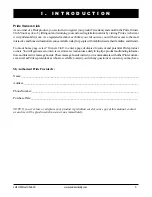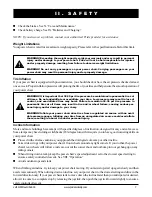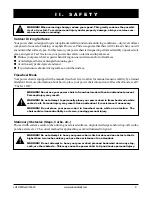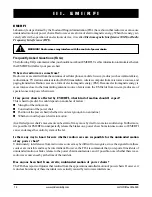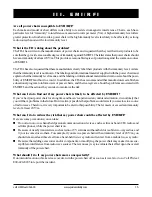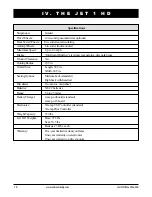
10
www.pridemobility.com
Jet1 HD/Rev H/Feb03
I I . S A F E T Y
Public Streets and Roadways
WARNING! You should not operate your power chair on public streets and roadways. Be
aware that it may be difficult for traffic to see you when you are seated on your power
chair. Obey all local pedestrian traffic rules. Wait until your path is clear of traffic, and
then proceed with extreme caution.
Stairs and Escalators
Power chairs are not designed to travel up or down stairs or escalators. Always use an elevator.
WARNING! Never use your power chair to negotiate steps or escalators. You may cause
injury to yourself and to others and/or damage your power chair.
Doors
n
Determine if the door opens toward or away from you.
n
Drive your power chair gently and slowly forward to push the door open. Or drive your power chair gently
and slowly backward to pull the door open.
Elevators
Modern elevators have a door edge safety mechanism that, when pushed, reopens the elevator door(s).
n
If you are in the doorway of an elevator when the door(s) begin to close, push on the rubber door edge or
allow the rubber door edge to contact the power chair and the door will reopen.
n
Use care that pocketbooks, packages, or power chair accessories do not become caught in elevator doors.
EMI & RFI
Laboratory tests performed by the Food and Drug Administration (FDA) have shown that radio waves can cause
unintended motion of electric mobility vehicles. Radio waves are a form of electromagnetic energy (EM). When
EM adversely affects the operation of an electronic device, it is called Electromagnetic Interference (EMI) or
Radio Frequency Interference (RFI). For more information, see III. EMI/RFI.
Figure 2. Curb Approach (Correct and Incorrect)





